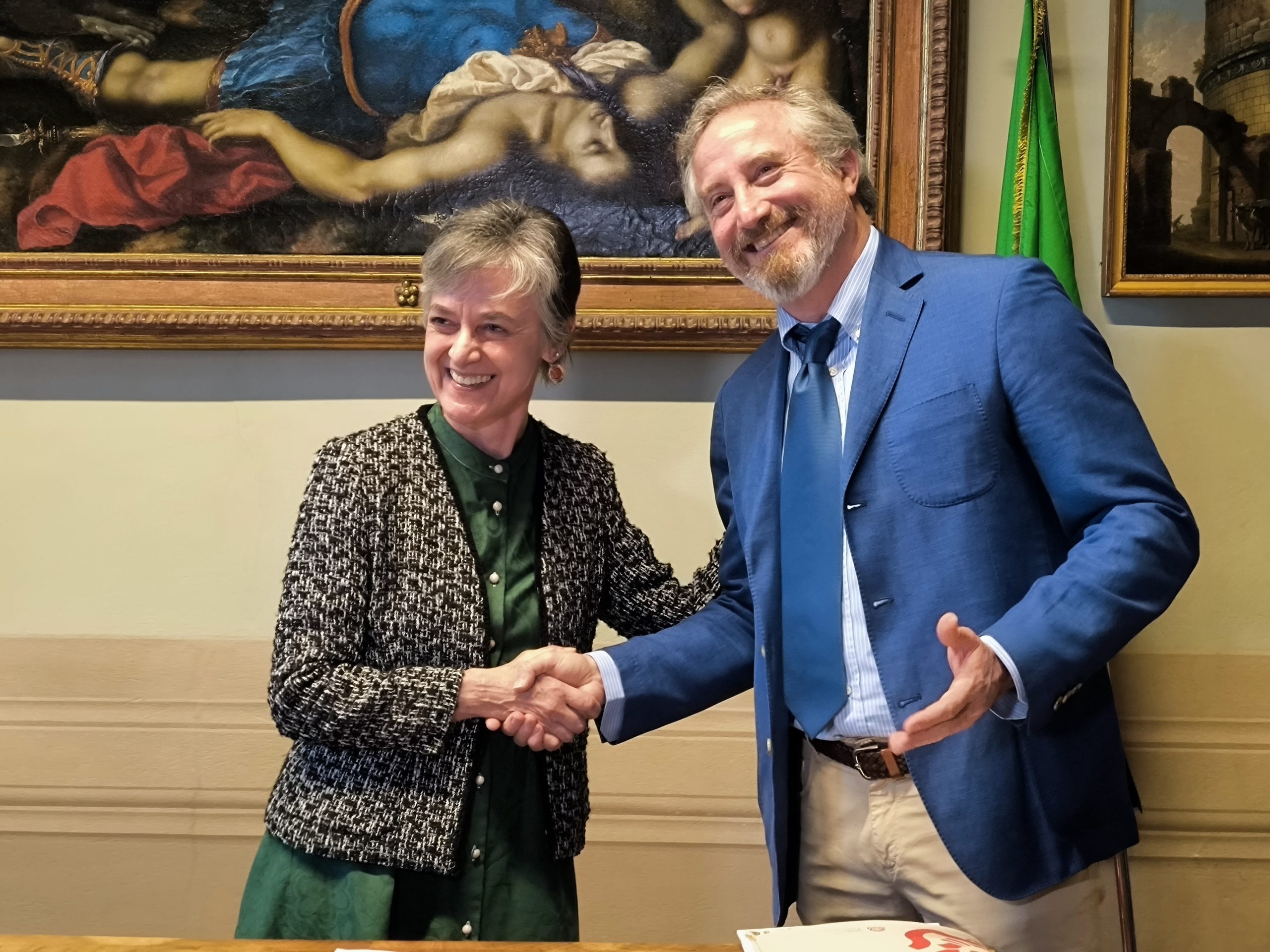25 years after the signing of the first CNR – National Institute of Optics and Opificio delle Pietre Dure di Firenze (Ministry of Culture) collaboration agreement, they renew the collaboration agreement signed in 1998, setting themselves a decidedly ambitious but realistic goal: to create, together, an integrated laboratory of chemical-physical investigations equipped with unique and innovative instrumentation for the creation of new knowledge for the conservation and restoration of works of art. The quality of the two institutions involved, and their long experience of collaboration, are a guarantee to build, also with other research institutions, a reference at an international level for the sector. In 1998, the agreement between CNR-INO and OPD gave life to the first scientific research laboratory in Europe, the result of a direct collaboration between the Ministry of Cultural Heritage and the Ministry of University and Research. Since then, conservation professionals and scientists have combined their expertise to create innovative solutions for restoration. Today, April 30, 2024, the two institutes renew this commitment by signing a new agreement with even more ambitious goals.
On November 12, 2023, the National Institute of Optics of the CNR (CNR-INO) and the Opificio delle Pietre Dure (OPD) celebrated the 25th anniversary of the signing of the first agreement aimed at integrating resources and expertise to conduct research together for the safeguarding of cultural heritage.
The 1998 agreement gave rise to the first and only scientific research laboratory in Europe resulting from direct collaboration between the Ministry of Cultural Heritage and Activities and the Ministry of University and Research. Since then, restorers, art historians, archaeologists, and researchers, united by a passion for the science of cultural heritage, have worked together systematically and interdisciplinarily to take care of Italian heritage.
Since the 1990s, CNR-INO and OPD have developed optical instrumentation prototypes for diagnostics together, creating innovative and non-invasive solutions for the understanding of the works of art under the care of OPD: from the creation of the first scanner based on a single band in the infrared (IR, up to 1.7 μm) to the development of the current multispectral reflectography scanner in 32 bands (from visible to IR). Thanks to research and innovation, the interdisciplinary team CNR-INO / OPD has developed, tested, and perfected in perfect synergy tools and expertise necessary to discover, analyze, and interpret even what the human eye cannot see in the artwork: preparatory drawings, pentimenti, the artist’s creative process, having images, three-dimensional models, spectral data, and other measured data on the works available to understand their material and compositional secrets.
The extraordinary results of this collaboration are now preserved in the archives and databases of the two institutions: reports, photographs, videos, images, maps, and models related to investigations, conservation interventions, and restorations carried out on masterpieces, just to name a few, by artists such as Raphael (“Madonna del cardellino,” Uffizi 2008), Piero Della Francesca (“Resurrezione di Cristo,” Sansepolcro 2009-2011), Caravaggio (Cena in Emmaus, Brera 2010), Leonardo da Vinci (“Adorazione dei Magi,” Uffizi 2011-2012), and other great modern and contemporary artists.
These interventions have not only allowed for a better understanding of the artworks and targeted planning of restoration interventions, but they have also opened the door to important international collaborations. The CNR-INO/OPD model has become the prototype that inspired the creation of E-RIHS, the European Research Infrastructure for Heritage Science, which will have its headquarters in Florence thanks to these foundations. Today, CNR-INO and OPD are embarking on new and more ambitious projects, building upon the experience gained in 25 years of collaboration. They aim to create an integrated laboratory for chemical and physical investigations (optical and nuclear), equipped with unique instruments to guide the study and restoration interventions on heritage, also through further collaborations with prestigious institutions and organizations.
“The strength of this renewed collaboration,” states Emanuela Daffra, interim superintendent of OPD, “lies in its foundation on highly-specialized expertise that confronts the needs and questions arising from the daily activities on very diverse classes of cultural assets. This anchoring to operability, and a very high level of operability, has ensured an extraordinary concreteness, which is intended to be carried forward as a distinctive feature.” “The application of the most advanced technologies to Cultural Heritage is the clearest testimony of how working on conservation and restoration does not confine us to the past but can project us into the future,” said Francesco Saverio Cataliotti, director of CNR-INO. “We are proud to be able to continue uniting the Florentine excellences in this adventure.”
